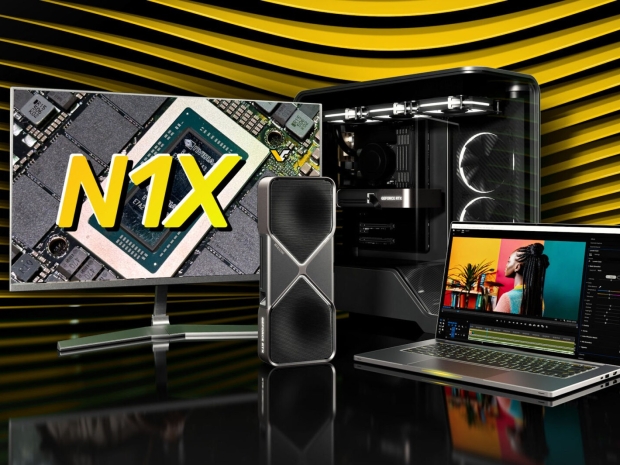The company’s first WoA SoC, codenamed N1X, was meant to launch in the second half of 2025, but insiders now say it won’t arrive until the first quarter of 2026.
The N1X is being co-developed with Mediatek and will be Nvidia’s first serious enterprise and consumer-class WoA processor. It is aimed squarely at the “AI PC” market, taking on Apple’s M-series chips, AMD’s Ryzen AI MAX, and Intel’s upcoming AX series.
DigiTimes said the delay is down to Vole's next-generation Windows release, which provides Arm-based PCs with fancy AI integration, running late. The planned OS update that was meant to debut with the N1X still needs several quarters of polish before it is ready.
Second, WoA adoption is sluggish. Qualcomm may boast about its Snapdragon-powered laptops flying off the shelves, but real consumer demand has been underwhelming. The “AI PC” hype just hasn’t translated into huge sales, especially when x86 systems from AMD and Intel still dominate.
The final spanner in the works is Nvidia which is tweaking the silicon. The N1X is based on TSMC’s N3B process and combines two key blocks: a Grace-based Arm CPU and a Blackwell GPU. Internally, it is referred to as GB10 and is already powering NVIDIA’s DGX Spark mini-supercomputers. The company is making design revisions and optimisations so that when the chip lands, it won’t be half-baked.
Early specs for the GB10 Superchip give us a taste of what the N1X will deliver. It has a 20-core Grace CPU, a Blackwell GPU with up to 1 PetaFlop of FP4 AI compute, support for up to 128 GB of LPDDR5X memory, and modern I/O features. Benchmarks have surfaced on Geekbench 6 showing a 3096 single-core score and 18,837 in multi-core at just 2.81 GHz. Some samples have even hit 3.9 GHz clocks.
By comparison, AMD’s Ryzen AI MAX+ 395 with 16 cores at over 5 GHz pulls roughly 3000–3100 points in single-core and around 19,000–21,000 in multi-core. So NVIDIA’s chip is already competitive, and the final revisions should only improve that.
Nvidia's N1 family is expected to have multiple models. The N1X will target enterprise and commercial devices, the N1C will be aimed at consumer laptops, and there may even be a low-power variant for handhelds or niche markets. Early estimates said these chips would deliver 180–200 AI TOPs, but with design changes still underway, final numbers remain uncertain.
When it finally launches, the N1X will go head-to-head with AMD’s Ryzen AI MAX, Apple’s next-gen M4, and Intel’s AX series. Nvidia is likely to give us another peek at CES 2026, where it will have to convince sceptics that WoA PCs are worth the wait.




